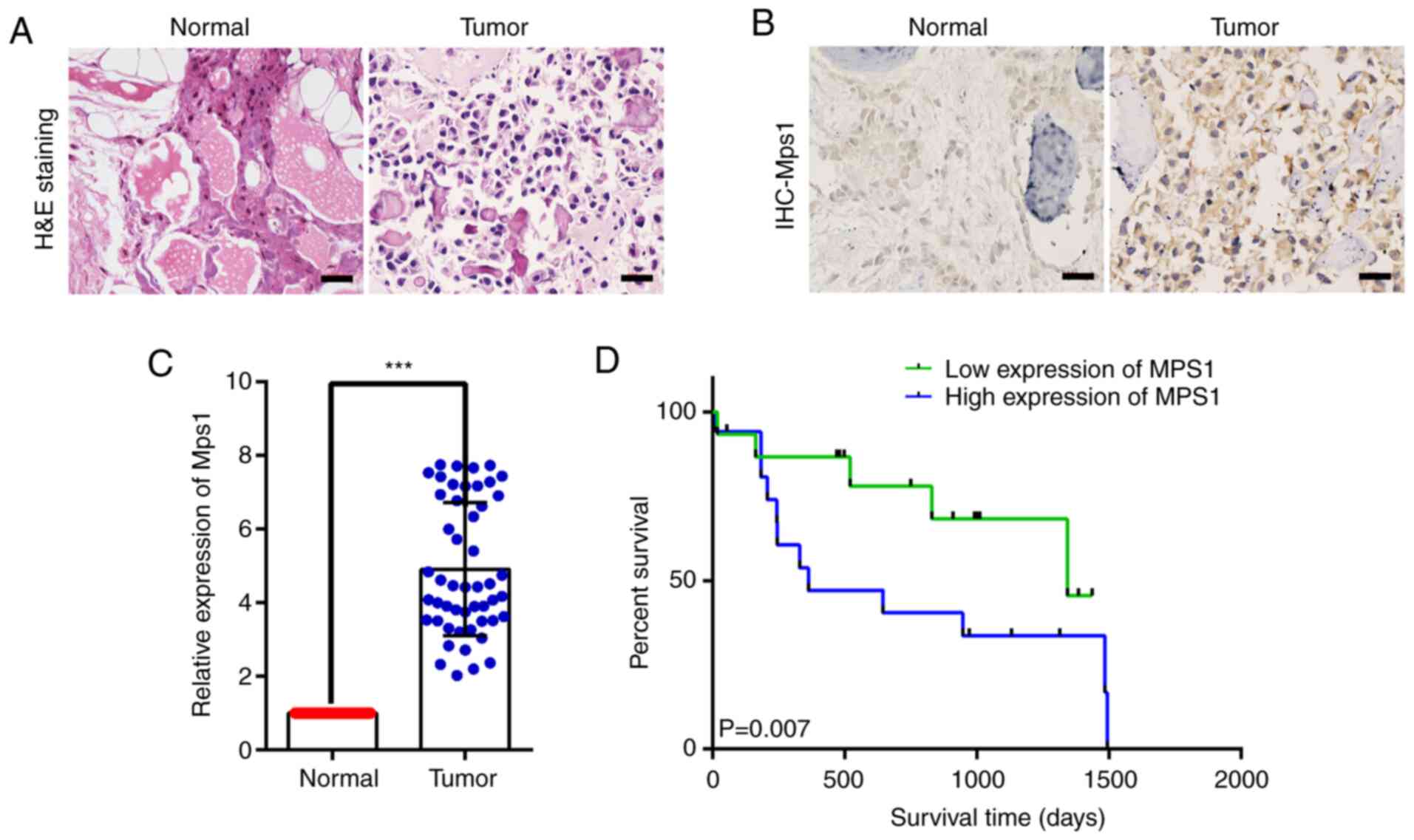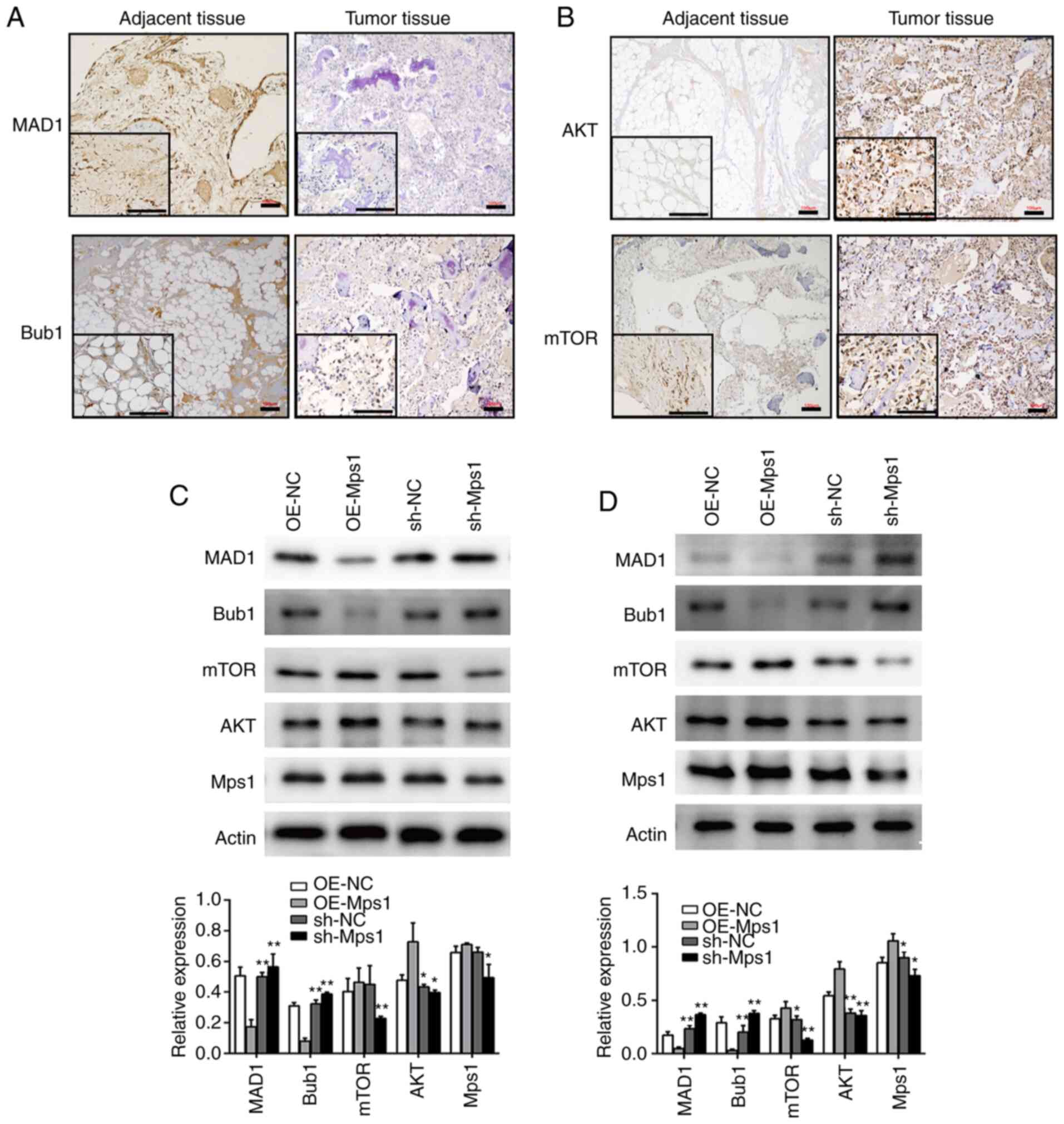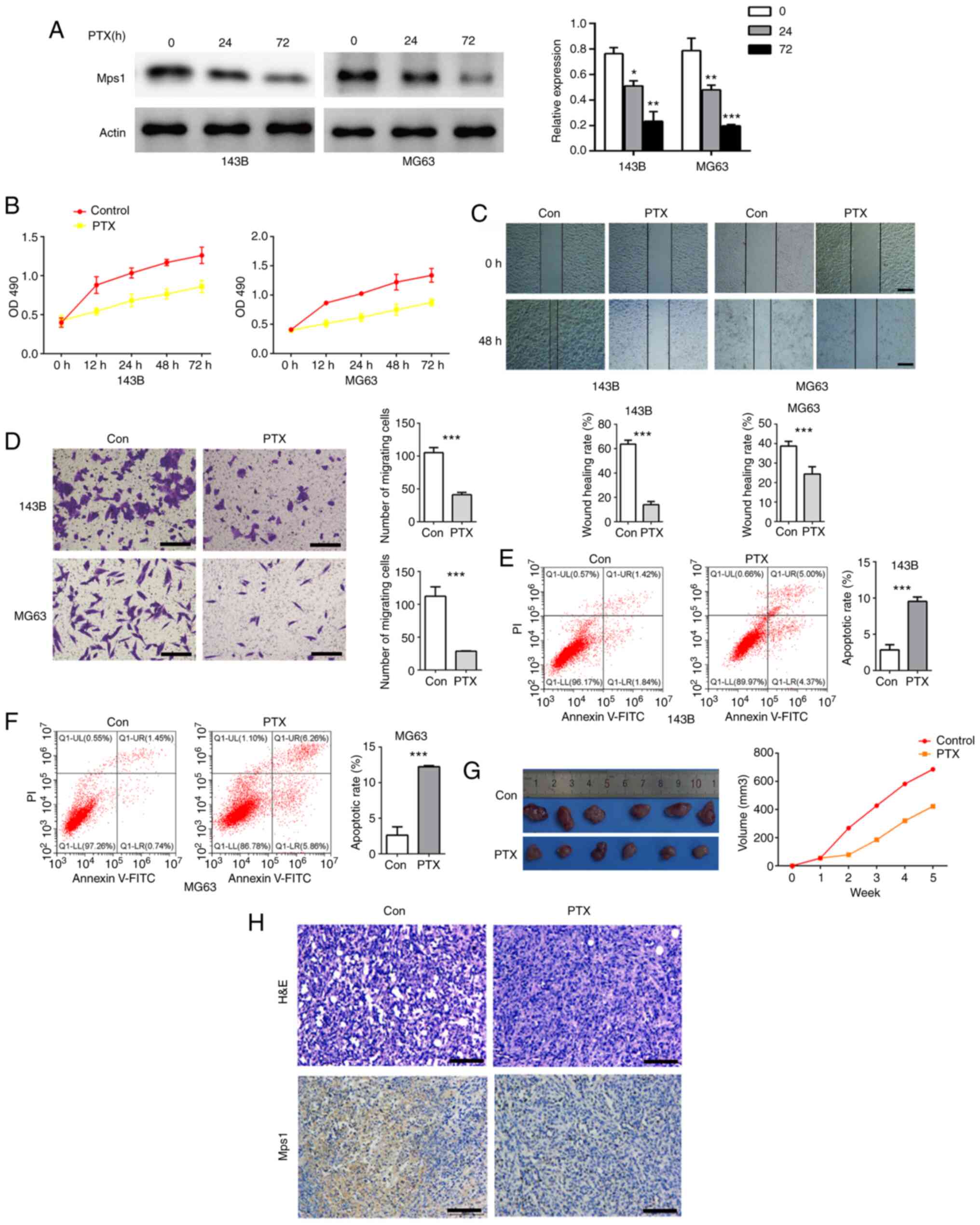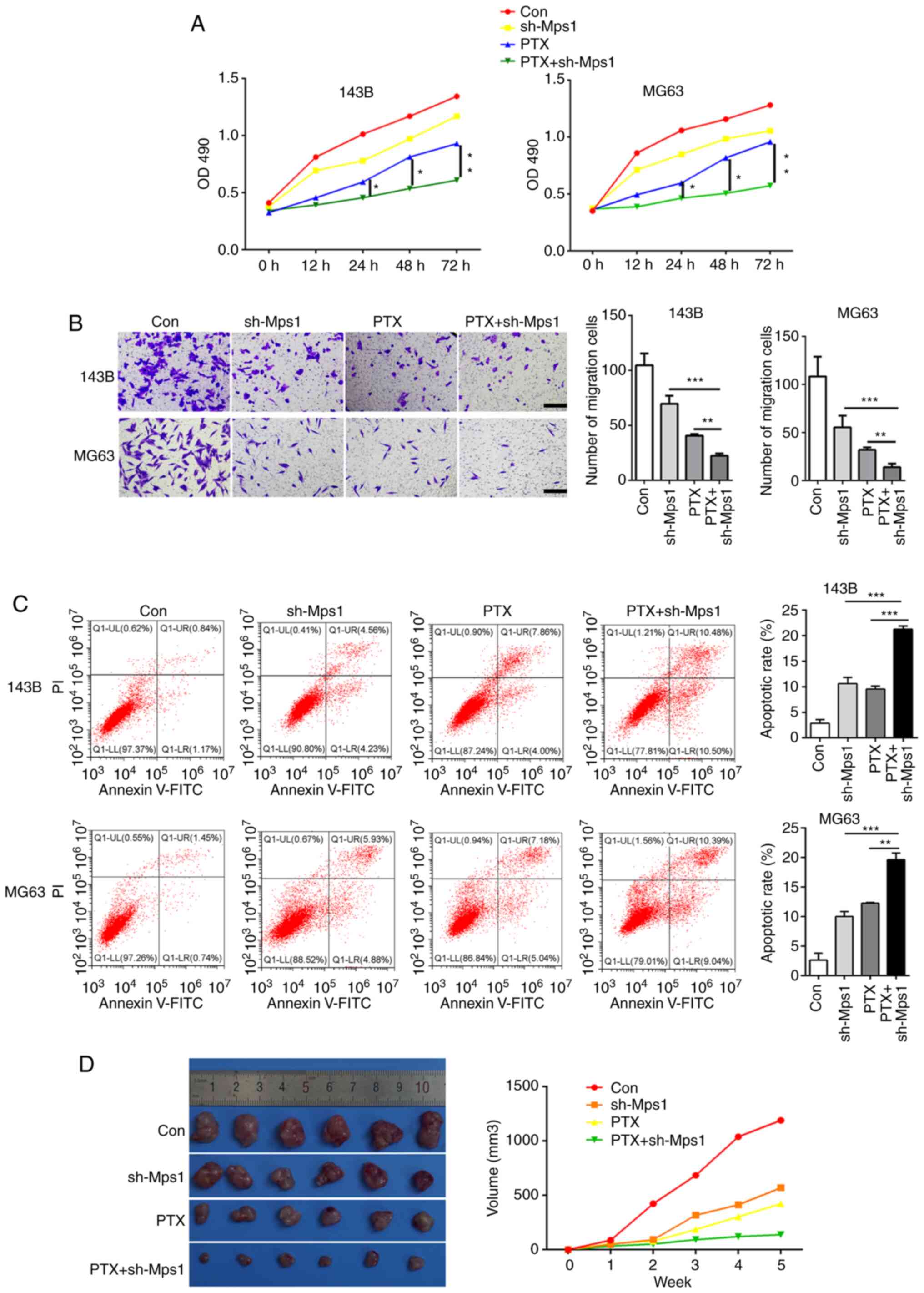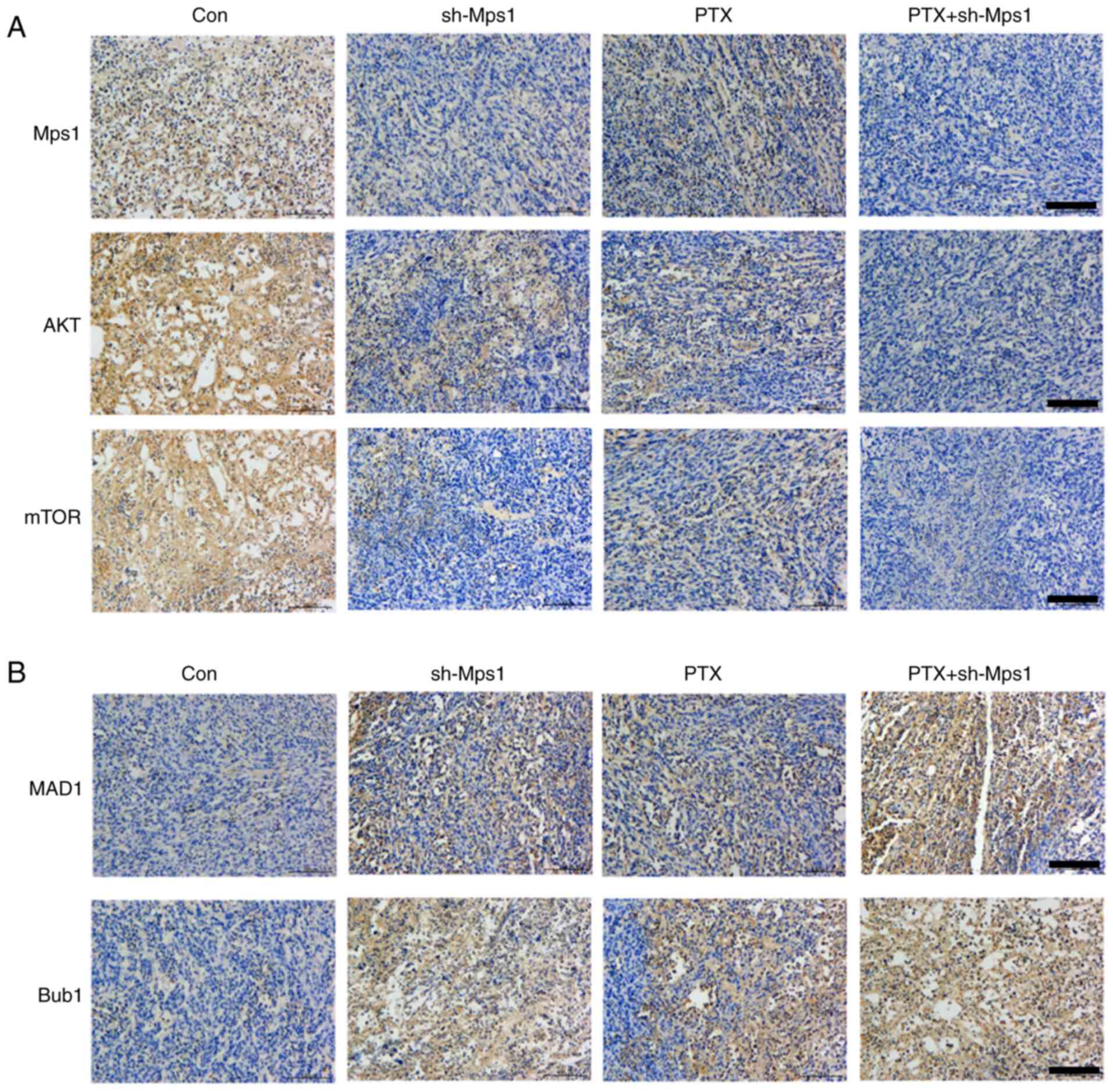|
1
|
Liu K, Ren T, Huang Y, Sun K, Bao X, Wang
S, Zheng B and Guo W: Apatinib promotes autophagy and apoptosis
through VEGFR2/STAT3/BCL-2 signaling in osteosarcoma. Cell Death
Dis. 8:e30152017. View Article : Google Scholar : PubMed/NCBI
|
|
2
|
Smeland S, Bielack SS, Whelan J, Bernstein
M, Hogendoorn P, Krailo MD, Gorlick R, Janeway KA, Ingleby FC,
Anninga J, et al: Survival and prognosis with osteosarcoma:
Outcomes in more than 2000 patients in the EURAMOS-1 (European and
American Osteosarcoma Study) cohort. Eur J Cancer. 109:36–50. 2019.
View Article : Google Scholar : PubMed/NCBI
|
|
3
|
Spraker-Perlman HL, Barkauskas DA, Krailo
MD, Meyers PA, Schwartz CL, Doski J, Gorlick R, Janeway KA and
Isakoff MS: Factors influencing survival after recurrence in
osteosarcoma: A report from the Children's Oncology Group. Pediatr
Blood Cancer. 66:e274442019. View Article : Google Scholar : PubMed/NCBI
|
|
4
|
Huang H, Han Y, Chen Z, Pan X, Yuan P,
Zhao X, Zhu H, Wang J, Sun X and Shi P: ML264 inhibits osteosarcoma
growth and metastasis via inhibition of JAK2/STAT3 and
WNT/beta-catenin signalling pathways. J Cell Mol Med. 24:5652–5664.
2020. View Article : Google Scholar : PubMed/NCBI
|
|
5
|
Perdue RE Jr: Procurement of plant
materials for antitumor screening. Cancer Treat Rep. 60:987–998.
1976.PubMed/NCBI
|
|
6
|
van Vuuren RJ, Visagie MH, Theron AE and
Joubert AM: Antimitotic drugs in the treatment of cancer. Cancer
Chemotherapy Pharmacol. 76:1101–1112. 2015. View Article : Google Scholar : PubMed/NCBI
|
|
7
|
Weaver BA: How Taxol/paclitaxel kills
cancer cells. Mol Biol Cell. 25:2677–2681. 2014. View Article : Google Scholar : PubMed/NCBI
|
|
8
|
Winey M, Goetsch L, Baum P and Byers B:
MPS1 and MPS2 novel yeast genes defining distinct steps of spindle
pole body duplication. J Cell Biol. 114:745–754. 1991. View Article : Google Scholar : PubMed/NCBI
|
|
9
|
Pachis ST and Kops G: Leader of the SAC:
Molecular mechanisms of Mps1/TTK regulation in mitosis. Open Biol.
8:1801092018. View Article : Google Scholar : PubMed/NCBI
|
|
10
|
Lauzé E, Stoelcker B, Luca FC, Weiss E,
Schutz AR and Winey M: Yeast spindle pole body duplication gene
MPS1 encodes an essential dual specificity protein kinase. EMBO J.
14:1655–1663. 1995. View Article : Google Scholar : PubMed/NCBI
|
|
11
|
Dominguez-Brauer C, Thu KL, Mason JM,
Blaser H, Bray MR and Mak TW: Targeting mitosis in cancer: Emerging
strategies. Mol Cell. 60:524–536. 2015. View Article : Google Scholar : PubMed/NCBI
|
|
12
|
Han Y, Wu Y, Xu Y, Guo W, Zhang N and Wang
X: Molecular mechanism of point mutation-induced Monopolar spindle
1 (Mps1/TTK) inhibitor resistance revealed by a comprehensive
molecular modeling study. PeerJ. 7:e62992019. View Article : Google Scholar : PubMed/NCBI
|
|
13
|
Mason JM, Wei X, Fletcher GC, Kiarash R,
Brokx R, Hodgson R, Beletskaya I, Bray MR and Mak TW: Functional
characterization of CFI-402257, a potent and selective Mps1/TTK
kinase inhibitor, for the treatment of cancer. Proc Natl Acad Sci
USA. 114:3127–3132. 2017. View Article : Google Scholar : PubMed/NCBI
|
|
14
|
Choi M, Min YH, Pyo J, Lee CW, Jang CY and
Kim JE: TC Mps1 12, a novel Mps1 inhibitor, suppresses the growth
of hepatocellular carcinoma cells via the accumulation of
chromosomal instability. Br J Pharmacol. 174:1810–1825. 2017.
View Article : Google Scholar : PubMed/NCBI
|
|
15
|
Maia ARR, Linder S, Song JY, Vaarting C,
Boon U, Pritchard CEJ, Velds A, Huijbers IJ, van Tellingen O,
Jonkers J and Medema RH: Mps1 inhibitors synergise with low doses
of taxanes in promoting tumour cell death by enhancement of errors
in cell division. Br J Cancer. 118:1586–1595. 2018. View Article : Google Scholar : PubMed/NCBI
|
|
16
|
Wengner AM, Siemeister G, Koppitz M,
Schulze V, Kosemund D, Klar U, Stoeckigt D, Neuhaus R, Lienau P,
Bader B, et al: Novel Mps1 kinase inhibitors with potent antitumor
activity. Mol Cancer Ther. 15:583–592. 2016. View Article : Google Scholar : PubMed/NCBI
|
|
17
|
Lara-Gonzalez P, Westhorpe FG and Taylor
SS: The spindle assembly checkpoint. Cur Biol. 22:R966–R980. 2012.
View Article : Google Scholar : PubMed/NCBI
|
|
18
|
Chong T, Sarac A, Yao CQ, Liao L, Lyttle
N, Boutros PC, Bartlett JMS and Spears M: Deregulation of the
spindle assembly checkpoint is associated with paclitaxel
resistance in ovarian cancer. J Ovarian Res. 11:272018. View Article : Google Scholar : PubMed/NCBI
|
|
19
|
Sudo T, Nitta M, Saya H and Ueno NT:
Dependence of paclitaxel sensitivity on a functional spindle
assembly checkpoint. Cancer Res. 64:2502–2508. 2004. View Article : Google Scholar : PubMed/NCBI
|
|
20
|
McGrogan B, Phelan S, Fitzpatrick P,
Maguire A, Prencipe M, Brennan D, Doyle E, O'Grady A, Kay E,
Furlong F and McCann A: Spindle assembly checkpoint protein
expression correlates with cellular proliferation and shorter time
to recurrence in ovarian cancer. Hum Pathol. 45:1509–1519. 2014.
View Article : Google Scholar : PubMed/NCBI
|
|
21
|
Zhang Y, Kwok-Shing Ng P, Kucherlapati M,
Chen F, Liu Y, Tsang YH, de Velasco G, Jeong KJ, Akbani R,
Hadjipanayis A, et al: A Pan-cancer proteogenomic atlas of
PI3K/AKT/mTOR pathway alterations. Cancer Cell. 31:820–832.e3.
2017. View Article : Google Scholar : PubMed/NCBI
|
|
22
|
Keppler-Noreuil KM, Parker VE, Darling TN
and Martinez-Agosto JA: Somatic overgrowth disorders of the
PI3K/AKT/mTOR pathway & therapeutic strategies. Am J Med Genet
C Semin Med Genet. 172:402–421. 2016. View Article : Google Scholar : PubMed/NCBI
|
|
23
|
Yue Z, Guan X, Chao R, Huang C, Li D, Yang
P, Liu S, Hasegawa T, Guo J and Li M: Diallyl disulfide induces
apoptosis and autophagy in human osteosarcoma MG-63 cells through
the PI3K/Akt/mTOR pathway. Molecules. 24:26652019. View Article : Google Scholar : PubMed/NCBI
|
|
24
|
Cheng DD, Li SJ, Zhu B, Zhou SM and Yang
QC: EEF1D overexpression promotes osteosarcoma cell proliferation
by facilitating Akt-mTOR and Akt-bad signaling. J Exp Clin Cancer
Res. 37:502018. View Article : Google Scholar : PubMed/NCBI
|
|
25
|
Zhao GS, Gao ZR, Zhang Q, Tang XF, Lv YF,
Zhang ZS, Zhang Y, Tan QL, Peng DB, Jiang DM and Guo QN: TSSC3
promotes autophagy via inactivating the Src-mediated PI3K/Akt/mTOR
pathway to suppress tumorigenesis and metastasis in osteosarcoma,
and predicts a favorable prognosis. J Exp Clin Cancer Res.
37:1882018. View Article : Google Scholar : PubMed/NCBI
|
|
26
|
Ho CM, Huang CJ, Huang SH, Chang SF and
Cheng WF: Demethylation of HIN-1 reverses paclitaxel-resistance of
ovarian clear cell carcinoma through the AKT-mTOR signaling
pathway. BMC Cancer. 15:7892015. View Article : Google Scholar : PubMed/NCBI
|
|
27
|
Chen D, Lin X, Zhang C, Liu Z, Chen Z, Li
Z, Wang J, Li B, Hu Y, Dong B, et al: Dual PI3K/mTOR inhibitor
BEZ235 as a promising therapeutic strategy against
paclitaxel-resistant gastric cancer via targeting PI3K/Akt/mTOR
pathway. Cell Death Dis. 9:1232018. View Article : Google Scholar : PubMed/NCBI
|
|
28
|
Horan TC and Emori TG: Definitions of key
terms used in the NNIS System. Am J Infection Control. 25:112–116.
1997. View Article : Google Scholar : PubMed/NCBI
|
|
29
|
Emori TG, Culver DH, Horan TC, Jarvis WR,
White JW, Olson DR, Banerjee S, Edwards JR, Martone WJ, Gaynes RP,
et al: National nosocomial infections surveillance system (NNIS):
Description of surveillance methods. Am J Infect Control. 19:19–35.
1991. View Article : Google Scholar : PubMed/NCBI
|
|
30
|
Livak KJ and Schmittgen TD: Analysis of
relative gene expression data using real-time quantitative PCR and
the 2(-Delta Delta C(T)) method. Methods. 25:402–408. 2001.
View Article : Google Scholar : PubMed/NCBI
|
|
31
|
Luu HH, Kang Q, Park JK, Si W, Luo Q,
Jiang W, Yin H, Montag AG, Simon MA, Peabody TD, et al: An
orthotopic model of human osteosarcoma growth and spontaneous
pulmonary metastasis. Clin Exp Metastasis. 22:319–329. 2005.
View Article : Google Scholar : PubMed/NCBI
|
|
32
|
Pautke C, Schieker M, Tischer T, Kolk A,
Neth P, Mutschler W and Milz S: Characterization of osteosarcoma
cell lines MG-63, Saos-2 and U-2 OS in comparison to human
osteoblasts. Anticancer Res. 24:3743–3748. 2004.PubMed/NCBI
|
|
33
|
de Azevedo JWV, de Medeiros Fernandes TAA,
Fernandes JV Jr, de Azevedo JCV, Lanza DCF, Bezerra CM, Andrade VS,
de Araújo JMG and Fernandes JV: Biology and pathogenesis of human
osteosarcoma. Oncol Lett. 19:1099–1116. 2020.PubMed/NCBI
|
|
34
|
Ferguson JL and Turner SP: Bone cancer:
Diagnosis and treatment principles. Am Fam Physician. 98:205–213.
2018.PubMed/NCBI
|
|
35
|
Biazzo A and De Paolis A:
Multidisciplinary approach to osteosarcoma. Acta Orthop Belg.
82:690–698. 2016.PubMed/NCBI
|
|
36
|
Stage TB, Bergmann TK and Kroetz DL:
Clinical pharmacokinetics of paclitaxel monotherapy: An updated
literature review. Clin Pharmacokinetics. 57:7–19. 2018. View Article : Google Scholar : PubMed/NCBI
|
|
37
|
Houghton PJ, Kurmasheva RT, Kolb EA,
Gorlick R, Maris JM, Wu J, Tong Z, Arnold MA, Chatterjee M,
Williams TM and Smith MA: Initial testing (stage 1) of the tubulin
binding agent nanoparticle albumin-bound (nab) paclitaxel
(Abraxane(®)) by the pediatric preclinical testing
program (PPTP). Pediat Blood Cancer. 62:1214–1221. 2015. View Article : Google Scholar : PubMed/NCBI
|
|
38
|
Xie Y, Wang A, Lin J, Wu L, Zhang H, Yang
X, Wan X, Miao R, Sang X and Zhao H: Mps1/TTK: A novel target and
biomarker for cancer. J Drug Target. 25:112–118. 2017. View Article : Google Scholar : PubMed/NCBI
|
|
39
|
Cai AL, Zeng W, Cai WL, Liu JL, Zheng XW,
Liu Y, Yang XC, Long Y and Li J: Peroxiredoxin-1 promotes cell
proliferation and metastasis through enhancing AktmTOR in human
osteosarcoma cells. Oncotarget. 9:8290–8302. 2017. View Article : Google Scholar : PubMed/NCBI
|















